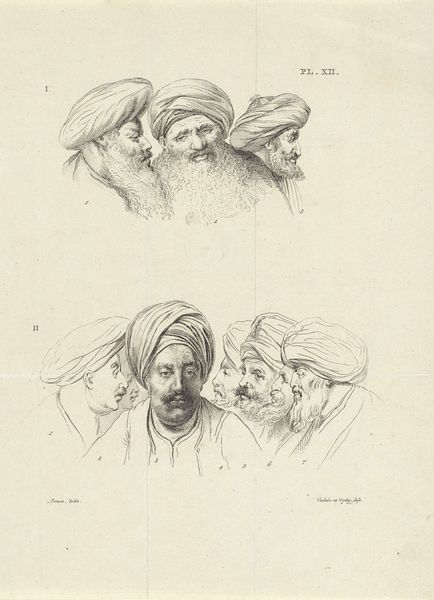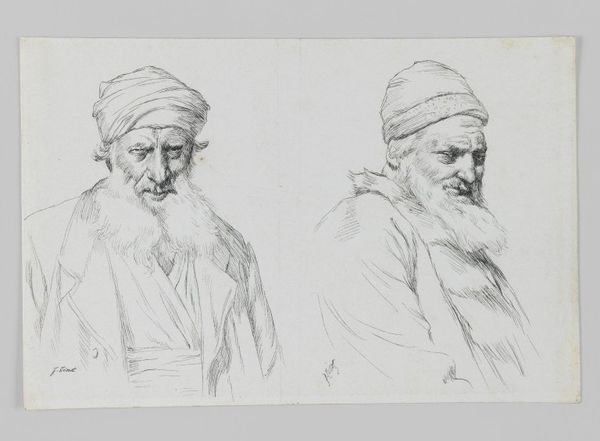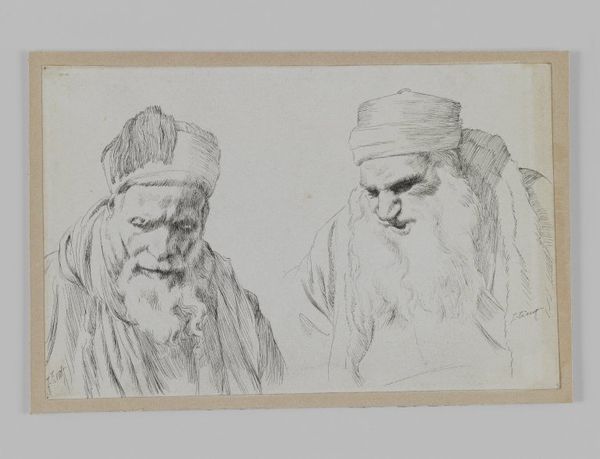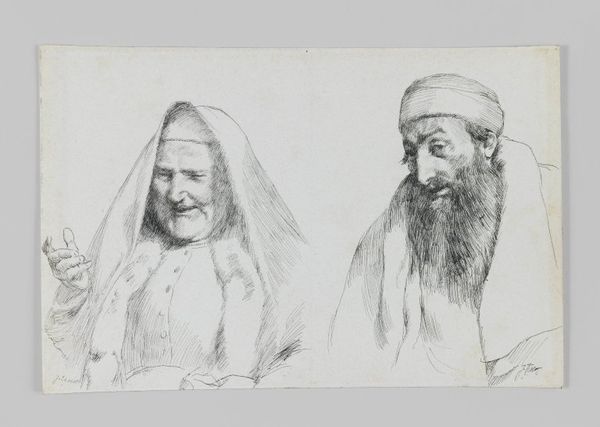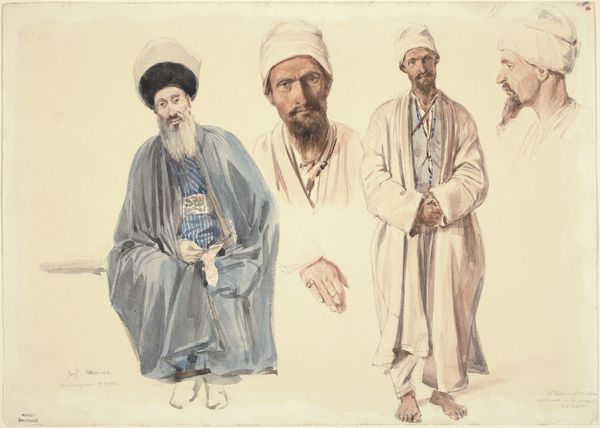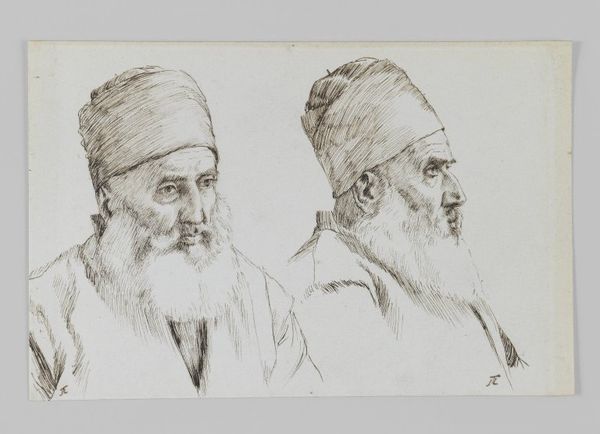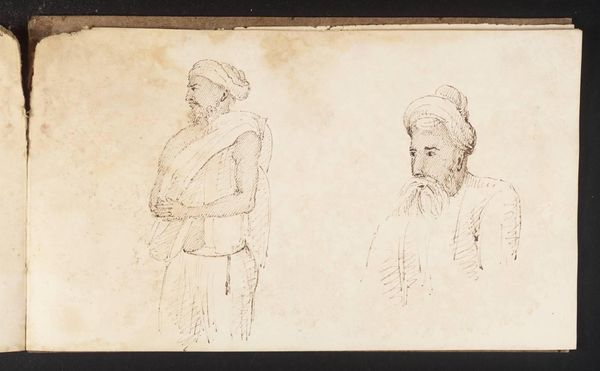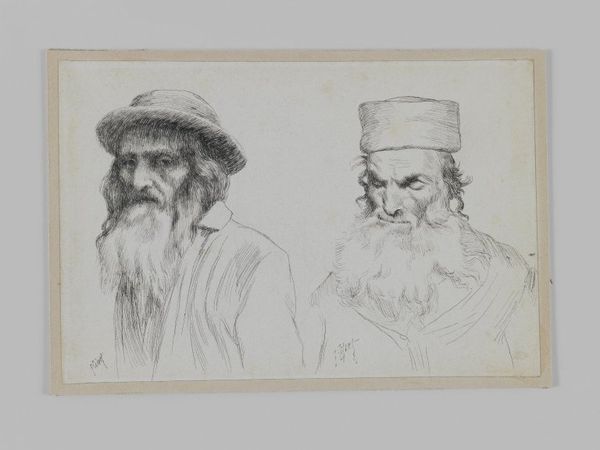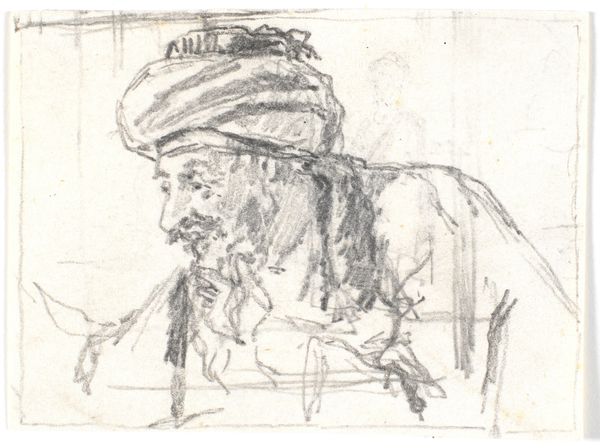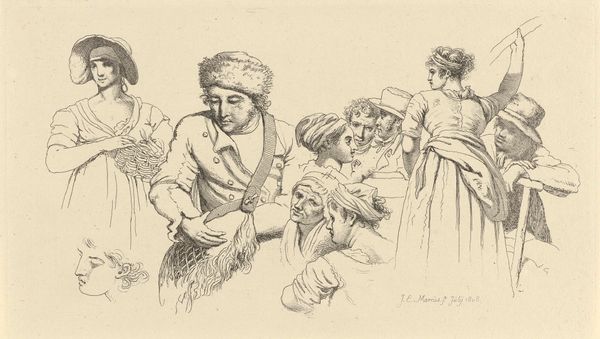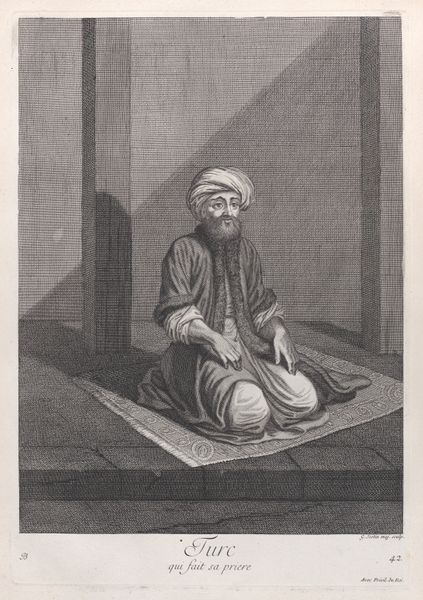
drawing, ink
#
portrait
#
drawing
#
neoclassicism
#
pencil sketch
#
ink
#
orientalism
#
academic-art
Dimensions: height 274 mm, width 192 mm
Copyright: Rijks Museum: Open Domain
Curator: This piece, “Egyptenaren A”, was created between 1803 and 1805 by Reinier Vinkeles. It’s a drawing using ink and pencil, and the museum here attributes it to both neoclassicism and Orientalism. Editor: The sheer density of faces, the head coverings, all rendered in such fine detail... it gives the impression of observing a field study. There’s something slightly ethnographic about the detached quality, yet the textures are mesmerizing. Curator: That's quite astute, actually. The Orientalist aspect likely reflects a period when European artists were captivated by the "exotic East." Consider the repetitive motifs in the turbans—a clear effort to capture and categorize foreign sartorial customs. Editor: Indeed. We see echoes of academic art here too. Do you believe this reflects any implicit or explicit power dynamics inherent during the colonial period? The detached, almost clinical representation, alongside an apparent fascination could suggest European dominance in observing other cultures. Curator: Certainly. Consider the historical context: such imagery perpetuated romanticized yet often inaccurate views that influenced Western perceptions and shaped biases around Egyptian identities for centuries. These kinds of categorizations did play a role in solidifying hierarchies. Editor: It is quite a sobering thought. Though it may have artistic value, It seems imperative for institutions that exhibit such works to acknowledge that complexity, creating awareness surrounding Orientalism, representation, and decolonization. How do you think we can balance our curatorial approach to past work like this with future commitments toward equity? Curator: I believe museums should showcase these images in ways that are cognizant of their historical baggage, accompanied with dialogue on cultural appropriation. When these visuals appear, they should trigger open discussions concerning cross-cultural relationships as a continuing social process. Editor: Agreed. It’s a challenge and an opportunity, a necessary step towards fostering richer understanding. Curator: I feel our examination of the piece illustrates why such cultural materials should prompt conversation. Editor: I share the sentiment, it makes you reconsider your perspective on how different images may be used across periods of history.
Comments
No comments
Be the first to comment and join the conversation on the ultimate creative platform.
